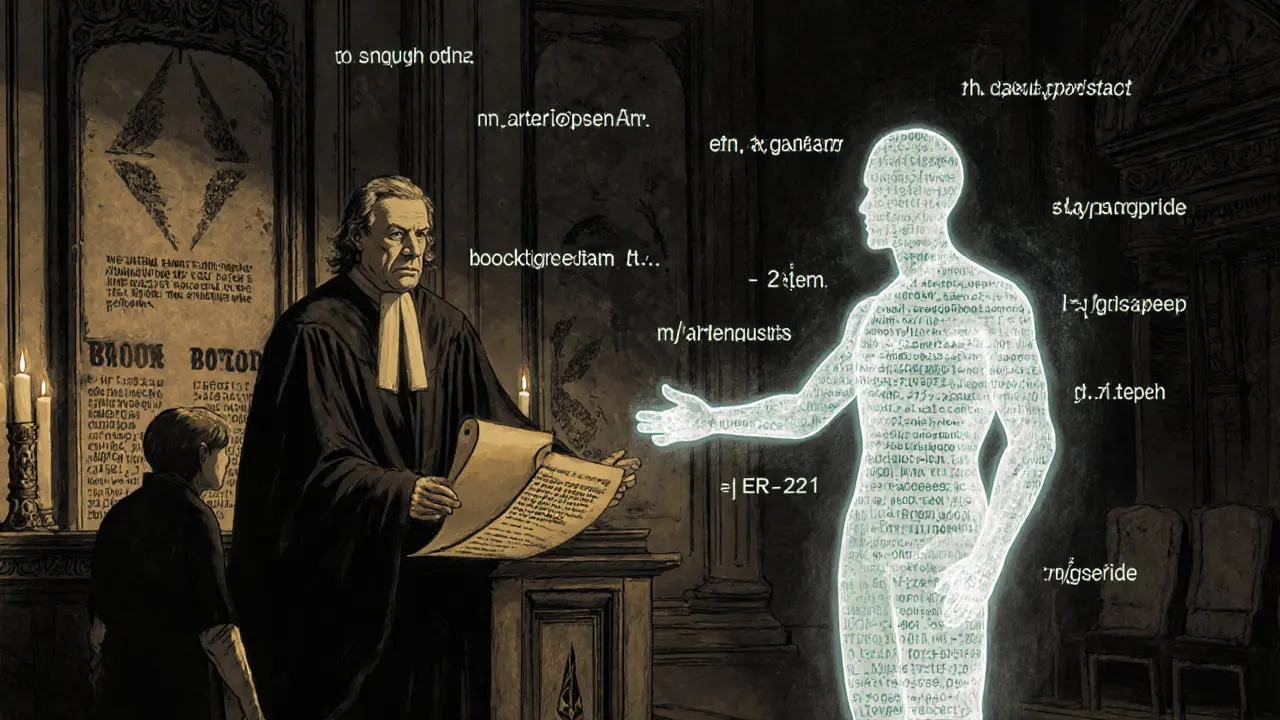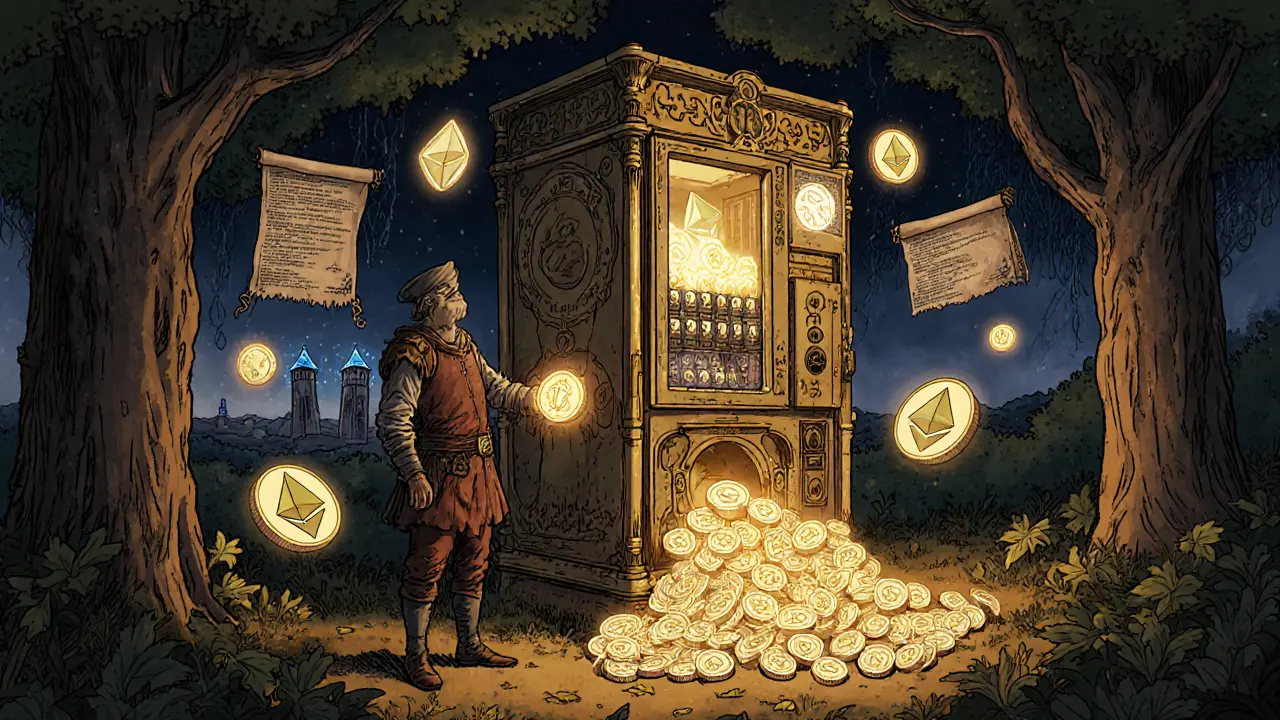Ethereum Gas Cost Calculator
How Gas Costs Work
Smart contracts require gas to deploy and interact with. Gas is paid in ETH and covers computational costs on the Ethereum network. Deployment costs vary based on contract complexity, while transaction costs depend on the specific function being called.
According to the article: Deploying a contract costs more than sending ETH because it stores code permanently on the blockchain. A simple contract might cost 2–3 million gas. A complex one can cost 10 million or more.
Calculate Your Costs
Smart contracts on Ethereum aren’t magic. They’re just code. But that code runs on a global, unstoppable computer - the Ethereum blockchain - and it does exactly what it’s told, no exceptions. No middlemen. No delays. No excuses. If you send the right amount of ETH to a contract, it releases tokens. If a deadline passes, it pays out. If two parties agree on the rules, the contract enforces them automatically. That’s the power of smart contracts.
What Exactly Is a Smart Contract?
A smart contract is a program stored on the Ethereum blockchain. It’s not a document you sign. It’s not a PDF. It’s code - written in Solidity or Vyper - that lives at a specific address on the blockchain. Once deployed, it can’t be changed. It runs exactly as written, every single time. Think of it like a vending machine: you put in the right input (money), and it gives you the exact output (a soda). No human needs to be involved. The machine just works.
These contracts are hosted on the Ethereum Virtual Machine (EVM), a global computer made up of thousands of nodes. Every node runs the same code, checks the same conditions, and updates the same ledger. That’s how Ethereum stays trustless - no single person controls it. The rules are baked into the code, and the network enforces them collectively.
How Do Smart Contracts Actually Execute?
Smart contracts run on simple if/when...then... logic. For example:
- If the sender’s address matches the contract owner, then allow withdrawal.
- When the timestamp is after October 31, 2025, then release the funds.
- If the user holds at least 100 tokens, then grant access to the private channel.
The contract watches the blockchain for triggers - usually a transaction sent to its address. When that happens, the EVM checks if the conditions are met. If yes, it runs the code. If no, it stops. No debate. No appeal.
Inside the code, special variables give the contract context:
msg.sender- who called this function?msg.value- how much ETH was sent?block.timestamp- what’s the current time on the blockchain?tx.gasprice- what was the gas fee paid?
These variables let contracts make decisions based on real-time blockchain data. No guesswork. No assumptions. Just code reacting to what’s happening on-chain.
How Are Smart Contracts Built?
Most Ethereum smart contracts are written in Solidity. It’s the most popular language for the job. Think of it like JavaScript, but designed specifically for blockchain. Here’s a basic example:
pragma solidity ^0.8.0;
contract SimpleContract {
address public owner;
uint256 public count = 0;
constructor() {
owner = msg.sender;
}
function increment() public {
require(msg.sender == owner, "Only owner can increment");
count += 1;
}
}This contract does three things:
- Sets the deployer as the owner when created.
- Stores a counter starting at zero.
- Allows only the owner to increase the counter.
The require() statement is crucial. It’s a safety check. If the condition fails, the transaction is reversed and the gas spent is lost - but nothing changes on the blockchain. It’s like a bouncer checking your ID before letting you in.
Before deployment, the code must be compiled into bytecode - a low-level language the EVM understands. Tools like Remix, Hardhat, or Foundry handle this. Remix runs right in your browser, making it easy for beginners to write, test, and deploy contracts without installing anything.

Deploying a Smart Contract Costs Gas
Deploying a smart contract isn’t free. It’s a transaction - and every transaction on Ethereum needs gas. Gas is paid in ETH and covers the computational cost of running the code on the network.
Deploying a contract costs more than sending ETH because it’s storing code permanently on the blockchain. A simple contract might cost 2-3 million gas. A complex one with many functions and storage variables can cost 10 million or more. Gas prices fluctuate based on network demand, so timing matters.
To deploy, you need:
- A wallet like MetaMask connected to Ethereum.
- ETH to pay for gas (even on testnets, you need test ETH).
- Compiled bytecode from your Solidity code.
Once deployed, the contract gets a permanent address - like a public mailbox. Anyone can interact with it, read its data, or call its functions - as long as they follow the rules written in the code.
Smart Contracts Can Talk to Each Other
One of the most powerful features of Ethereum is composability. Smart contracts can call other contracts. This means you can build complex systems by combining simple ones.
For example:
- An NFT marketplace contract calls a token contract to verify ownership.
- A lending protocol calls a price oracle to check the value of collateral.
- A DAO contract calls a voting contract to tally proposals.
This is how DeFi apps like Uniswap or Aave work. They’re not single contracts - they’re ecosystems of contracts working together. One contract handles swaps, another handles liquidity pools, another handles interest rates. Each one does one thing well, and they link up like LEGO bricks.
Contracts can even deploy new contracts. That’s how token launches work - a single contract creates thousands of new ERC-20 tokens on the fly.
Limitations: What Smart Contracts Can’t Do
Smart contracts are powerful, but they’re not perfect. Here are two big limits:
1. They Can’t Access Real-World Data
Imagine a contract that pays out if it rains tomorrow. How does it know if it rained? It can’t check the weather app. It can’t call a meteorologist. The blockchain only knows what’s on the blockchain.
To solve this, we use oracles. Oracles are third-party services that fetch real-world data - like stock prices, weather, or sports results - and feed it into the contract. Chainlink is the most trusted oracle network on Ethereum. But here’s the catch: the contract now trusts the oracle. That’s a trade-off. The more external data you need, the more trust you introduce.
2. Contracts Have a Size Limit
Ethereum limits contract code to 24KB. That’s about 5,000 lines of Solidity. If you go over, deployment fails. This isn’t a bug - it’s a security feature. Big contracts are harder to audit and cost more gas to run.
Developers get around this with patterns like the Diamond Pattern. Instead of one giant contract, you split functionality into smaller, modular contracts. The main contract acts like a router, pointing calls to the right module. It’s like having a phone with interchangeable apps instead of one bloated operating system.

Token Standards: Smart Contracts That Define Assets
ERC-20 and ERC-721 aren’t separate blockchains. They’re smart contract templates - standards that define how tokens behave.
- ERC-20 is for fungible tokens - like USD or Bitcoin. Each token is identical and interchangeable. It defines functions like
transfer(),balanceOf(), andapprove(). - ERC-721 is for non-fungible tokens - like digital art or collectibles. Each token is unique. It includes functions like
ownerOf()andtokenURI()(which links to metadata like an image or description).
These standards mean your MetaMask wallet can display any ERC-20 or ERC-721 token - no special app needed. The wallet doesn’t need to know the contract’s code. It just follows the standard. That’s interoperability.
Why This Matters
Smart contracts remove the need for banks, lawyers, brokers, and notaries. They turn agreements into automated rules. A rental contract can release keys when rent is paid. A freelance contract can pay out when the work is verified. A charity can release funds only if a goal is met.
They’re the foundation of DeFi, NFTs, DAOs, and Web3. They make digital ownership real. They let people from anywhere in the world interact without trusting each other - only trusting the code.
But they’re not foolproof. Bad code can be exploited. Bugs can cost millions. That’s why audits, testing, and simplicity matter more than ever.
What’s Next?
Ethereum is evolving. Layer-2 solutions like Arbitrum and Optimism are making contracts cheaper and faster. New versions of the EVM are improving efficiency. Tools are getting better. More people are learning Solidity.
Smart contracts won’t replace all traditional systems. But for things that need automation, transparency, and global access - they’re already the best tool we have.
Can smart contracts be hacked?
Yes, if they’re poorly written. Bugs in code - like reentrancy attacks, integer overflows, or unchecked external calls - have led to losses of hundreds of millions of dollars. That’s why audits by firms like CertiK or OpenZeppelin are critical before deploying. Always test on testnets first. Never trust code you didn’t write or haven’t reviewed.
Do I need to know how to code to use smart contracts?
No. Most people interact with smart contracts through apps like MetaMask, Uniswap, or OpenSea. You click a button, sign a transaction, and the contract runs in the background. But if you want to create your own contract, you’ll need to learn Solidity and blockchain development tools.
Are smart contracts legally binding?
Legally, it’s still unclear in many countries. But technically, they’re binding because they execute automatically. If you agree to a contract’s terms by sending ETH to its address, you’re agreeing to its code. Courts are starting to recognize blockchain transactions as evidence, but enforcement depends on local law. The code enforces - the law may or may not back it up.
Can I delete or change a smart contract after deploying it?
No. Once deployed, the code is permanent on the blockchain. You can’t edit it. But you can deploy a new version and direct users to it. Some contracts include upgradeability features using proxy patterns, but that adds complexity and trust assumptions. The golden rule: if you can’t change it, make sure it’s right the first time.
How do I check what a smart contract does before interacting with it?
You can read the contract’s code on Etherscan by searching its address. Look for the "Contract" tab and check if the code is verified. Read the functions. See what permissions it asks for. If it’s not verified, don’t interact. Unverified contracts could be malicious. Always verify the source before sending funds.

Beth Devine
November 2, 2025 AT 07:39Smart contracts are like automated vending machines for trust. No need to hope someone does the right thing-code just does it. I’ve used them for freelance payments and never had a dispute. The transparency is insane.
David Roberts
November 3, 2025 AT 09:51Technically, the EVM is a deterministic state machine, not a 'global computer'-that’s a misleading abstraction. The consensus layer enforces state transitions, but the 'computer' metaphor obscures the actual architecture. Also, gas isn’t computational cost-it’s a congestion pricing mechanism. You’re conflating mechanism with metaphor.
Monty Tran
November 4, 2025 AT 09:56Smart contracts are the future but they’re not magic. They’re code. Code has bugs. Bugs cost money. People die because of bad code. We need regulation not just audits
Brian McElfresh
November 6, 2025 AT 08:09Wait so you're telling me the government can't shut this down? That's why they're pushing CBDCs. This is the last free financial system left. They know it. That's why they're scared. The Fed is already drafting laws to ban non-compliant contracts. Don't be fooled.
Hanna Kruizinga
November 8, 2025 AT 04:58Ugh here we go again with the blockchain cult. You people act like this is the second coming when 90% of smart contracts are just glorified scripts with 50% more gas fees. I lost $3k to a rug pull last year. Still waiting for my 'trustless' justice.
Shaunn Graves
November 8, 2025 AT 18:14So you say 'no middlemen' but then you praise oracles? That’s the whole contradiction right there. You want decentralization but you’re begging centralized data feeds to validate your contract. You’re not building trustless systems-you’re outsourcing trust to Chainlink. That’s not innovation, that’s hypocrisy.
Jessica Hulst
November 9, 2025 AT 09:02There’s a beautiful irony here: we’re building systems that eliminate human judgment, then we rely on human judgment to audit them. We’re trying to create a world where rules are absolute, yet we still need lawyers to interpret the code. It’s like building a perfect prison and then hiring guards to decide who deserves mercy. The dream of pure automation is beautiful-but human nature always leaks in. Even in code.
Kaela Coren
November 10, 2025 AT 20:02One must consider the ontological implications of immutability. If a contract is deployed and contains a logical flaw, is it an error of the programmer or an emergent property of the system? The blockchain does not forgive. It does not forget. It merely executes. This raises questions not of engineering, but of ethics. Who bears moral responsibility when the machine acts?
Nabil ben Salah Nasri
November 11, 2025 AT 05:49Love this breakdown! 🙌 Seriously, the diamond pattern is genius-like microservices but on-chain. I’ve used it for my DAO and it saved me from hitting the 24KB limit. Also, Etherscan is your best friend. Always verify before you interact. Stay safe out there, fam! 💪
alvin Bachtiar
November 13, 2025 AT 01:45This post reads like a crypto bro’s LinkedIn post. You romanticize automation while ignoring that 97% of contracts are either rug pulls, scams, or poorly audited dumpster fires. You mention ‘trustless’ like it’s a virtue. It’s not. It’s a liability. The only thing more dangerous than a corrupt banker is a perfectly executed piece of malicious code.
Josh Serum
November 14, 2025 AT 23:37Man I just started learning Solidity last week and this made so much sense. I was scared at first but now I get it-code is law. No more waiting for banks to clear. Just send ETH and boom, it happens. I’m gonna deploy my own token next week. Wish me luck!
DeeDee Kallam
November 16, 2025 AT 20:40im so tired of this blockchain bs. i just wanna watch netflix and not think about gas fees or oracles or whatever. why does everything have to be decentralized now? just let me pay my rent like a normal person
Elizabeth Melendez
November 17, 2025 AT 11:46One thing I love about smart contracts is how they level the playing field. A kid in Nairobi can deploy a contract that interacts with someone in Berlin without needing a bank account. No gatekeepers. No paperwork. Just code. I’ve seen it change lives-people getting paid instantly for freelance work, small businesses accessing liquidity without credit checks. It’s not perfect, but it’s the closest thing to financial justice we’ve got.
Phil Higgins
November 17, 2025 AT 11:47You mention composability like it’s a feature, not a risk. Every contract calling another contract is a potential attack surface. One bug in a dependency can collapse an entire ecosystem. That’s not innovation-it’s fragility dressed up as elegance. The DeFi explosion was built on sand. We’re just waiting for the tide.
Genevieve Rachal
November 19, 2025 AT 04:52Let’s be real: smart contracts are just a way for engineers to feel powerful while ignoring the fact that real-world contracts rely on context, nuance, and human discretion. You think a contract that releases funds when rent is paid solves eviction? No. It just automates cruelty. Code doesn’t care if you lost your job. It just executes. That’s not progress. That’s dehumanization.
Eli PINEDA
November 20, 2025 AT 23:12wait so if i send eth to a contract and it dosnt work can i get it back? or is it gone for good? like i dont get it
Debby Ananda
November 21, 2025 AT 12:01Oh honey, you think this is revolutionary? I’ve seen this in 2017. Everyone’s still using Solidity? In 2025? Please. The real future is zkEVMs and recursive proofs. You’re still using Vyper? How quaint. Also, your gas estimates are laughable. A simple contract now costs 8M gas on mainnet. You’re living in 2021.
Vicki Fletcher
November 23, 2025 AT 07:37Can someone explain why we can’t just have a ‘delete contract’ button? Like, if I made a mistake, or if the contract is abandoned, why can’t I just… remove it? It’s sitting on the blockchain forever. Isn’t that wasteful? I mean, we’re storing code like it’s sacred scripture. But what if it’s bad code? What if it’s just… noise?
David James
November 24, 2025 AT 04:30Great summary! I’ve been using MetaMask for a year and just now understand how the EVM works. The require() statement is such a simple but powerful safety net. I just deployed my first contract on Sepolia testnet-felt like a real developer. Keep it simple, test hard, and never skip the audit. Solid work!